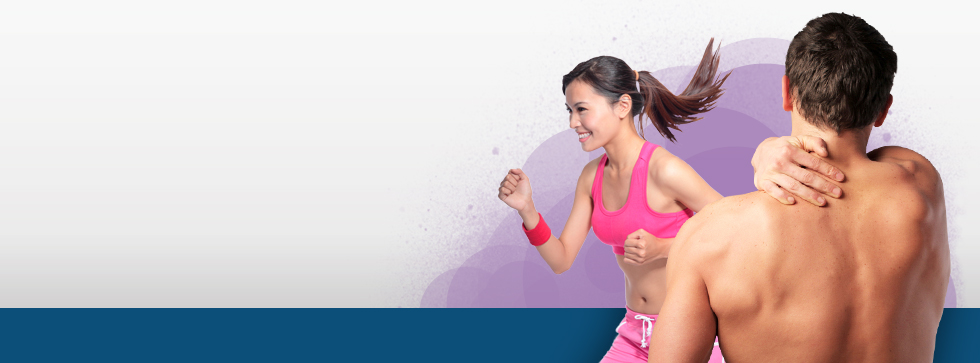
We are officially in muscle strain season. At The Wellness Centre (Castle Quay), during spring and summer, we receive a high amount of calls from old and new patients requiring help for a muscle they’ve pulled as result of enjoying the good weather, for instance gardening, walks, running and so on…
For those wanting to know a little bit more about these nuisance injuries please read on-
What is a muscle strain?
A muscle strain or pull occurs when a muscle is overstretched or torn. This usually occurs as a result of overstretching, fatigue or improper use of a muscle. The most frequent muscle strains occur in the shoulders, the lower back and hamstring (a group of three muscles in the back of the leg).
Muscle strains are graded in terms of severity from grade 1-3:
• Grade 1: Mild damage to individual muscle fibres (less than 5% of fibres) that causes minimal loss of strength and motion.
• Grade 2: More extensive damage with more muscle fibres involved. There is loss of function of the muscle with possible bruising.
• Grade 3: Complete rupture of a muscle or tendon. This causes severe pain with extensive bruising. This strain may result in an avulsion fracture (separation of bone at the osteotendinous junction).
In sports what are the most common muscles that people strain?
According to Muffalli et al (2015) muscle injuries are frequent in high demand sports, accounting for 10 to 55% of all acute sports injuries. The muscles and muscle groups most frequently involved are the hamstrings, rectus femoris (part of the quads), and the medial head of the gastrocnemius (calf muscle).
How long does a muscle strain take to heal?
This depends on the grade of the strain. As a general rule of thumb:
- Grade 1 strains should completely heal within a few weeks.
- Grade 2 strains take around 6-8 weeks.
- Grade 3 strains can take 12+ weeks. Often this recovery involves surgical intervention.
With this in mind it is important, regardless of the grade of your strain, that you follow a set rehabilitation protocol whilst making your recovery. Failure to follow an evidenced based treatment protocol may have long lasting negative effects on the function of the damaged muscle (Pedrinelli et al. 2006). At The Wellness Centre (Castle Quay) we have a group of professionals who have experience in building bespoke rehabilitation schedules for patients to ensure they make full and safe recovery.
How to prevent straining a muscle whilst enjoying your activities and hobbies on the island…
Following these rules will help mitigate the chance of you straining a muscle:
- Warm-up DYNAMICALLY before undergoing any form of exercise. This form of warm up will ensure your muscles are supple and prepared for the endurance ahead. STATIC stretching is not gold standard, hence why professional sports players will rarely undergo this type of stretching before exercise.
- Work up towards your maximal strenuous activity level from the start of your routine. Take your time and let your body adapt to surroundings before putting your musculoskeletal system through excessive demand.
- Know and understand what aggravates your musculoskeletal system. If you suffer from chronic recurrent specific strains, it is important to consider what form of exercise you undertake. For instance, if you suffer from recurrent calf strains, activities such as cycling, beach and hill running, etc. should be limited, and other forms of training like swimming, rowing and so on should be increased. Note however, that the recommendation of reducing a form of exercise does not mean stopping it… We all have activities that we enjoy and the risk of a strain should not outweigh the benefits and enjoyment we get from it. However, if said exercise is an aggravating factor or bearing excessive load on a previously injured muscle, precaution should be taken.
- Keep hydrated. This will reduce your chances of suffering from cramp and potential strain.
We hope that you have great Spring and Summer enjoying the glorious weather. Should you pick up a strain, rest assured the Team at The Wellness Centre (Castle Quay) are here to help…
Call 633060 Today to Book Your Appointment, or Click Here.
– By DC Hadley James-Brown
Refrences
Maffulli, Nicola et al PY – 2015/11/04 SP – 14 EP – 8 T1 – Muscle Injuries: A Brief Guide to Classification and Management VL – 12
Pedrinelli A, Fernandes TL, Thiele E, Teixeira WJ. Lesão muscular – ciências básicas, fisiopatologia, diagnóstico e tratamento. In: Alves Júnior WM, Fernandes TD., editors. Programa de atualização em traumatologia e ortopedia (PROATO) Artmed; Porto Alegre: 2006. pp. 10-32.
